THE WALL STREET JOURNAL: The Next Big Thing: Peruvian Food
Ceviches, causas and anticuchos provide flavors that have the world's top toques raving, experimenting and catching the next jet.By KATY MCLAUGHLIN
Make room Spain and Korea, Peru is having its moment in the gastronomic sun.
Yesterday, a crew of the culinary world's leading lights, including Denmark's René Redzepi, France's Michel Bras and America's Dan Barber began descending on Lima for a star-studded food festival. This week, Spain's Ferran Adrià, the unofficial dean of global haute cuisine, will begin making a documentary film about the food scene there. A huge restaurant from the nation's top celebrity chef will open later this month in Manhattan.
Peruvian cuisine, the result of a nearly 500-year melting pot of Spanish, African, Japanese and Chinese immigration and native Quechua culture, is on the lips of top chefs worldwide. Zagat Survey lists four times more Peruvian restaurants in New York, San Francisco, Miami, Los Angeles, Boston and Philadelphia than it did a decade ago. The cuisine's key ingredients (like aji amarillo, a yellow chili) are now found at farmers' markets frequented by chefs, and sales of pisco, Peru's fiery grape brandy, have doubled in the last five years. Ceviche, the country's famous cured-seafood salad, abounds on menus, even outside of Peruvian spots: Haute cuisine temples Le Bernardin and Daniel both serve it. Peruvian chefs say they are able to entice investors to finance homages to their national cuisine for the first time.
Mr. Adrià said he became intensely interested in Peru after members of his team went there and came home raving about the food scene. He decided to take his first visit this month to make a documentary about what he discovers.
"I want the world to know what's happening there. I'm excited about the flavors and the food, and also the social web of the food, farmers, chefs and the people," Mr. Adrià said.
Top chefs from around the world will be gathering in Lima over the next few days for Mistura, a 10-day food festival that began in 2008 and has become the most important food event in Latin America, attracting a projected 300,000 visitors this year. There they will discover a cuisine unique in Latin America. Peruvian food features a lot of seafood, often prepared raw or cured; high acid—Key lime juice and red onion are ubiquitous flavors; and a subtle hint of spice provided by the fruity aji pepper, which leaves lips tingling. Peruvian food also uses lots of potatoes—there are about 3,000 varieties in Peru, where the tuber originated. Ceviche often features pieces of either yellow potato or yam, and mashed potatoes are served cold, with fish or chicken salad as toppings, in a dish called causa.
For diners unfamiliar with Peruvian food, there's a gateway in the form of the Japanese influence on the cuisine. Many of the best-loved recipes, including tiraditos (slices of raw fish, dressed in flavorful sauce) and anticuchos (grilled skewers of marinated meats and shellfish), will remind diners of their favorite Japanese dishes, but with a twist. The country's influence in Peruvian food is no surprise: There are an estimated 90,000 Japanese descendants in Peru, a country of about 30 million people.
Many international cooks have been drawn to Peru by Gastón Acurio, the country's top celebrity chef, who is dedicated to proselytizing his national cuisine the world over. The 43-year-old Mr. Acurio, who opened his first restaurant in Lima in 1994, now has 32 restaurants in 14 cities worldwide.
Restaurateur Danny Meyer, who helped shepherd Mr. Acurio into the Manhattan space vacated by Mr. Meyer's Tabla restaurant, says he believes Peruvian food "will be huge."
"This is the kind of food you can do very frequently and feel virtuous, healthy and sexy," said Mr. Meyer, who had never eaten a Peruvian meal before dining at Mr. Acurio's San Francisco restaurant last year.
Mr. Acurio has urged industry friends, including Wylie Dufresne, Dan Barber and, this spring, Mr. Meyer, to visit Peru, and given them a tour of his eateries, demonstrated ingredients and sent them to the best restaurants he knows.
"The big mission is to use Peruvian food as an instrument to put our culture in the world," Mr. Acurio said.
A 2009 food tour of Lima made a profound impression on Mr. Barber, said the chef, who owns Blue Hill in Manhattan and Blue Hill at Stone Barns in Pocantico Hills, N.Y., and has cooked for the Obamas.
"I was thrilled by the food, experiencing flavors I don't usually get to experience," Mr. Barber said. "The raw fish stuff was brilliant, consistently incredibly flavorful and refreshing and filling."
Daniel Patterson, of Coi and Plum in the San Francisco Bay area, returned from a trip down the Peruvian Amazon in January, full of inspiration. While Mr. Patterson doesn't plan on recreating recipes—he only cooks with local ingredients—he said the techniques he observed "will change me in some way."
"The way they play with acid and spice is very different," he said, noting the high acid in some dishes.
Growing enthusiasm for his national cuisine helped chef Ricardo Zarate achieve his dream of opening a Peruvian restaurant after a decade of frustration. Mr. Zarate, who went to cooking school in Lima, spent 12 years working in high-end Japanese restaurants in London. Convinced that Peruvian food deserved a place on the world stage, he began hunting for investors in 2001, but couldn't convince enough deep pockets that it was the next big thing. Finally, in 2009, while living in Los Angeles, he pulled together $30,000 and opened Mo-Chica, a stand serving six dishes in a market food court in downtown Los Angeles.
After a nerve-rattlingly slow three weeks, Mo-Chica was soon packed, won a slew of honors and attracted a business partners and investors. In June, Mr. Zarate opened Picca, a glamorous, loft-like restaurant serving Peruvian food with a heavy Japanese accent in Los Angeles. He plans a host of other Peruvian restaurants.
"It all happened because Peruvian food has a special flavor," he said.
Sea Bass Ceviche with Leche de Tigre
From chef Ricardo Zarate of Picca and Mo-Chica in Los Angeles
Ingredients
For the sauce:
- 1/3 cup honey
- 4 cloves garlic
- ¼ red onion, thinly sliced
- 4 sticks celery, peeled
- 1/8 pound fresh sea bass
- 1 cup lime juice, key lime if available (make sure not to squeeze too deeply into the lime, or the juice will taste bitter)
- ½ cup coconut milk
- 1 tablespoon aji amarillo paste
For the ceviche:
- 1 pound fresh sea bass
- ½ red onion, sliced
- 1 tablespoon cilantro, minced
- Salt and pepper (to taste)
Notes: Aji amarillo is a yellow Peruvian chili paste found in Latin markets.
What To Do
1. In a blender, purée all the sauce ingredients until smooth.
2. Sharpen a long, thin knife and slice sea bass into 1/3-inch cubes.
3. Mix the sauce with all the ceviche ingredients and let marinate for 15 minutes before serving. Ceviche is best eaten immediately but will also be good, though different, after an hour or two. Keep chilled at all times.
VÍDEO:
Fuentes:
http://online.wsj.com/article/SB10001424053111904199404576540970634332968.html?KEYWORDS=mistura#
http://online.wsj.com/video/from-peru-the-melting-pot-cuisine/AD957528-BB7B-4438-BE6D-60744222D065.html (VÍDEO con subtítulos en español e inglés).
![[peru99]](http://si.wsj.net/public/resources/images/OB-PN867_peru99_G_20110908234339.jpg)

![[GARLIC]](http://si.wsj.net/public/resources/images/OD-AK283A_GARLI_DV_20110909015421.jpg)


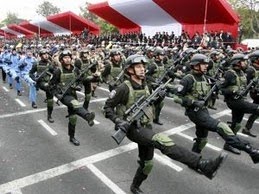



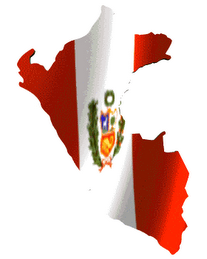

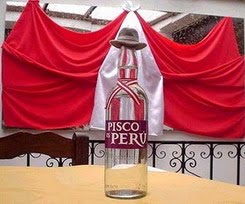




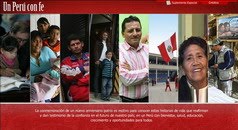

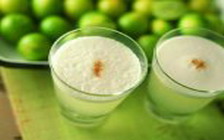

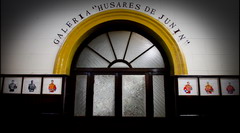

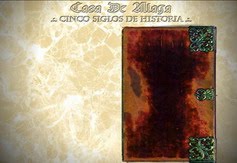


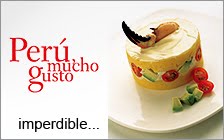





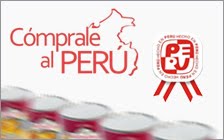.jpg)








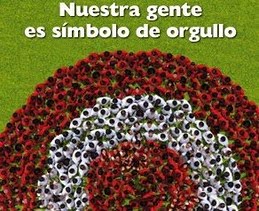
No hay comentarios:
Publicar un comentario